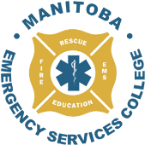998945 - Applied Suicide Intervention Skills Training (ASIST)
Course Description
The Applied Suicide Intervention Skills Training (ASIST) workshop is for caregivers who want to feel more comfortable, confident and competent in helping to prevent the immediate risk of suicide. Over a million caregivers have received this training. Just as “CPR” skills make physical first aid possible, training in suicide intervention develops the skills needed for life-assisting suicide first-aid. ASIST is a two-day intensive, interactive and practice-dominated course designed to help caregivers learn how to intervene to prevent the immediate risk of suicide and provide safety-for-now.
The workshop is designed for all caregivers (any person over age 15 in a position of trust). This includes professionals, paraprofessionals and lay people. It is suitable for mental health professionals, nurses, physicians, pharmacists, teachers, counselors, youth workers, police and correctional staff, school support staff, clergy, and community volunteers. In ASIST, sophisticated helping concepts are translated into generic language so that different types of caregivers can learn together. ASIST is the most widely used suicide intervention training program in the world. Additional information is available online at www.livingworks.net.
Contact Hours: 14
Course Outline
The ASIST workshop is divided into five sections:
- Preparing: This short but important section introduces and sets the tone for the workshop. Participants arrive at the workshop with a number of different ideas about what might happen, based on their hopes, needs and experiences. In this section, you want to tell participants about the workshop and create an atmosphere for active participation during the rest of the two days.
- Connecting: Given the stigma and taboo that surrounds suicide, many participants will have had little chance to freely and openly discuss their attitudes about suicide. The Connecting section provides this opportunity. In workgroup discussion, participants explore, express, identify, examine and perhaps modify their attitudes about suicide and life-assisting, suicide first-aid. Looking at attitudes toward suicide is the first step in learning the knowledge and skills to work with persons with suicide thoughts.
- Understanding: The Understanding section introduces participants to the Pathway for Assisting Life (PAL) model or guide. PAL is designed to meet the needs of persons with suicide thoughts by guiding caregivers to do certain life-assisting tasks that address those needs. This section supports the earlier discussion of attitudes and helps prepare participants for intervention practice on Day 2. If the objectives of the Connecting section are reached, participants end the morning with a commitment to learn more about life-assisting, suicide first-aid. This section is a chance to follow up on that commitment. Participants will learn about and have a chance to practice some parts of PAL. This afternoon lays the foundation for Day 2 where participants will study PAL in more detail and have the opportunity to use it in a series of simulations.
- Assisting: This section focuses on the process themes that emerge in life-assisting intervention. These themes are fluid and flexible while supporting the structural aspects of the PAL that are the same for every intervention. In the Assisting section, participants practice working with situations in which they can combine their desire to help with their understanding of what is helpful. Participants have the opportunity to practice and apply their learning.
- Working Together: This section is about community and human resources, including self care, and about working together with other helpers in their community. By the time participants reach this section, they are beginning to think about how they can be a part of their community’s resources. In this section, participants first have a chance to explore further the way their role choices might impact their helping a person with thoughts of suicide. Next, they have a chance to experience how all community resources might aid a person with thoughts of suicide. Participants are also reminded of the importance of self care as a personal resource. Lastly, the section gives time for evaluation and concluding comments.
Learner Outcomes
Preparing Section
- Understand that the focus of this workshop is life-assisting, suicide first-aid.
- Describe the need for caregivers to be able to do life-assisting interventions.
- Describe why ASIST is a good way for caregivers to learn life-assisting skills.
- Describe the goals and objectives of the workshop.
- Summarize the group’s experiences with suicide.
- Know what they need to do to help make the workshop successful for everyone.
Connecting Section
- Recognize how feelings about and personal experiences with suicide might impact them in suicide first aid.
- Identify beliefs that might assist them to be direct and comfortable in suicide situations.
- Identify beliefs that might help them to be more flexible in meeting a person with thoughts of suicide’s need for guidance.
- Talk more openly about their attitudes toward suicide and life-assisting, suicide first-aid.
Understanding Section
- Recognize PAL as a tool for meeting the life-assisting needs of persons with suicide thoughts.
- Name the six needs of a person with thoughts of suicide and the basic caregiver tasks of PAL that address those needs.
- Outline how to use PAL’s Safety Framework.
Assisting Section
- Explain PAL as a tool that helps participants combine their attitudes, knowledge and intervention skills to provide suicide first aid.
- Outline how PAL works in practice.
- Use PAL to help a person with thoughts of suicide through simulations.
Working Together Section
- Explore how their role choices might impact helping a person with thoughts of suicide.
- Experience how community resources might benefit a person with thoughts of suicide.
- Recognize the value of personal support networks and other self care ideas for caregivers.
Applies Towards the Following Certificates
- Public Fire Paramedic Program (PFPP) Diploma : Public Fire Paramedic Program (PFPP) Diploma
